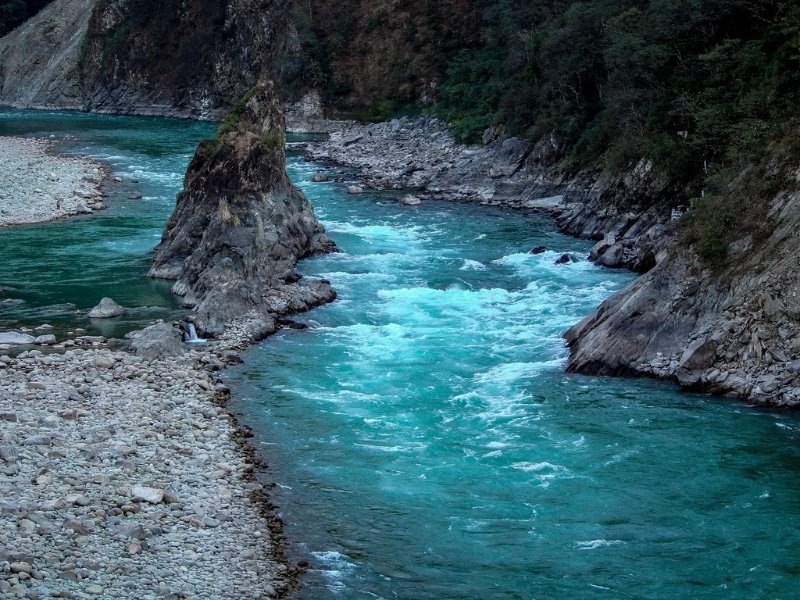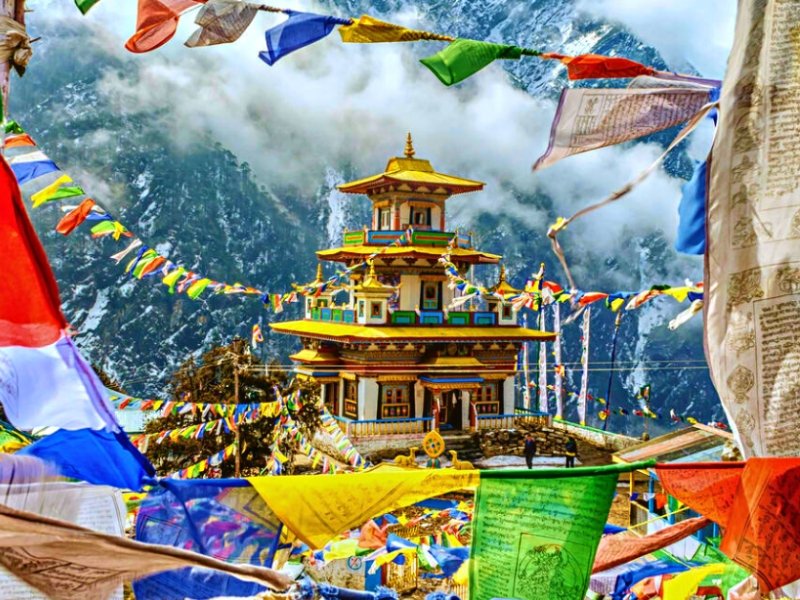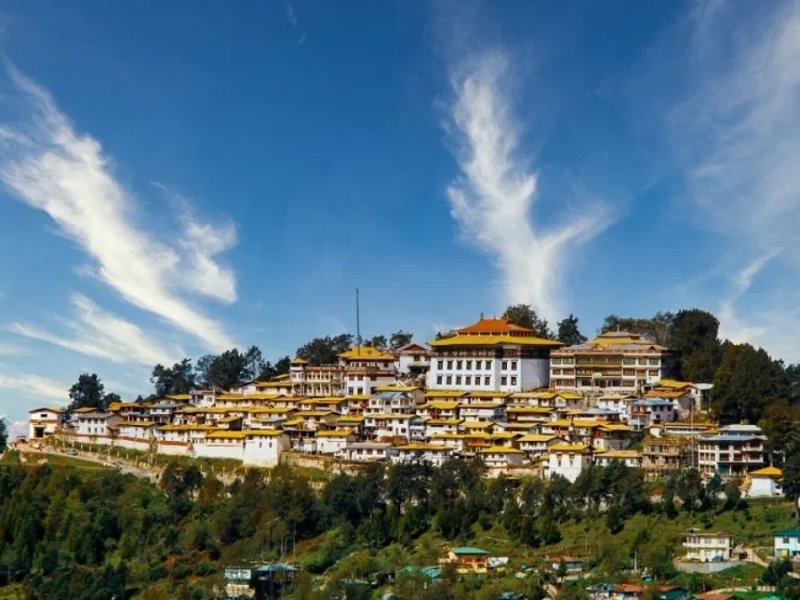Arunachal Pradesh
Overview
Arunachal Pradesh is one of the northeastern states of India. It is known for its stunning natural beauty, diverse cultures, and rich biodiversity. Here are some key facts about Arunachal Pradesh:
Arunachal Pradesh is located in the northeastern part of India, sharing its borders with the countries of China (Tibet) to the north, Bhutan to the west, and Myanmar (Burma) to the east. It is also bordered by the Indian states of Assam to the south and Nagaland to the southeast.
The capital of Arunachal Pradesh is Itanagar.
The state is characterized by its rugged terrain, with the Himalayas to the north and the Brahmaputra River valley to the south. It is a region of great geographical and climatic diversity, with snow-capped peaks in the north and subtropical forests in the south.
Arunachal Pradesh is home to a multitude of ethnic groups and tribes, each with its own distinct culture, language, and traditions. Some of the major tribes include the Nyishi, Adi, Apatani, Monpa, and many more. The state's cultural diversity is reflected in its festivals, handicrafts, and cuisine.
Arunachal Pradesh is known for its rich biodiversity. It is home to a wide variety of flora and fauna, including several endangered species such as the snow leopard, red panda, and Indian elephant. The state has several protected areas and national parks, making it a haven for wildlife enthusiasts and nature lovers.
The economy of Arunachal Pradesh is primarily agrarian, with a focus on subsistence farming. The state is also rich in natural resources, including timber, minerals, and hydropower potential. Tourism is gradually emerging as an important sector due to the state's natural beauty and cultural attractions.
The state is linguistically diverse, with numerous languages spoken by various tribal communities. English is the official language, and Hindi is also widely understood and spoken.
Arunachal Pradesh is increasingly becoming a popular tourist destination. Visitors come to explore its natural beauty, trek in the Himalayas, visit monasteries, and experience the unique culture of its tribal communities. Some of the popular tourist destinations include Tawang, Ziro Valley, Bomdila, and Namdapha National Park.
Arunachal Pradesh became a union territory in 1972 and then a full-fledged state of India in 1987. It has its own elected government, headed by a Chief Minister.
Arunachal Pradesh has been a subject of border disputes between India and China. The border, known as the Line of Actual Control (LAC), has been a contentious issue, and both countries have had occasional military standoffs in the region.
Arunachal Pradesh is a unique and culturally diverse state that offers a glimpse into the rich tapestry of India's northeastern regions. It is known for its natural beauty, remote landscapes, and the warm hospitality of its people.
Traditions and Culture
Tribal Diversity: Arunachal Pradesh is home to numerous indigenous tribes, each with its unique customs, languages, and traditional practices. Some prominent tribes include the Nyishi, Adi, Apatani, Monpa, and Galo.
Traditional Attire: The people of Arunachal Pradesh often wear colorful and intricately designed traditional attire, which varies from tribe to tribe. Bamboo and cane are commonly used in their clothing and accessories.
Oral Traditions: Many of the tribes have rich oral traditions, with storytelling, folk songs, and dances playing a vital role in passing down their cultural heritage.
Festivals: Festivals are an integral part of Arunachal Pradesh's culture. Some of the major festivals celebrated include Losar (Tibetan New Year), Torgya, Dree Festival, Nyokum Yullo, and Sangken.
Fairs and Festivals:
Losar: Losar, the Tibetan New Year, is celebrated with great enthusiasm, featuring colorful processions, mask dances, and traditional rituals.
Torgya: Torgya is a Monpa festival celebrated with masked dances, prayers, and offerings to ward off evil spirits.
Dree Festival: The Adi tribe celebrates the Dree Festival to appease the Gods for a bountiful harvest. It involves rituals, dances, and community feasts.
Nyokum Yullo: The Nyishi tribe celebrates Nyokum Yullo to honor the Goddess of crops and prosperity. It involves traditional dances, rituals, and feasting.
cuisine:
Arunachal Pradesh offers a variety of traditional dishes, often prepared using locally sourced ingredients. Some popular dishes include Thukpa (noodle soup), Momos (dumplings), Zan (fermented cheese), and Bamboo Shoot Curry. The cuisine here is influenced by Tibetan, Assamese, and Southeast Asian flavors.
Must-Visit Places:
Tawang: Known for its stunning Tawang Monastery, this town offers breathtaking Himalayan landscapes and a serene ambiance.
Itanagar: The capital city is home to historical sites like the Ita Fort and the Ganga Lake (Gekar Sinyi).
Ziro Valley: Famous for its picturesque landscapes and the Apatani tribe's unique culture and paddy cultivation.
Bomdila: Visit the Bomdila Monastery and soak in the natural beauty of the region.
Shopping
You can shop for traditional handicrafts, textiles, and bamboo and cane products in local markets and craft centers. Some popular items include handwoven shawls, masks, tribal jewelry, and traditional attire.
How to Reach
By Air: The nearest major airport is Lokpriya Gopinath Bordoloi International Airport in Guwahati, Assam. From there, you can take a domestic flight to Lilabari Airport in North Lakhimpur, Assam, which is the closest airport to Arunachal Pradesh.
By Road: Arunachal Pradesh is well-connected by road from neighboring states like Assam and Meghalaya. National Highway 15 connects Assam to Arunachal Pradesh.
By Rail: The nearest railway station is Naharlagun Railway Station, located near the capital city, Itanagar. However, the railway network in the region is limited, and most travelers prefer to reach Arunachal Pradesh by air or road.
Please note that visiting Arunachal Pradesh may require obtaining Inner Line Permits (ILP) for Indian citizens and Protected Area Permits (PAP) for foreign tourists. These permits are essential for entry into certain restricted areas within the state, and you can obtain them from designated authorities. Always check the latest travel regulations and permit requirements before planning your trip.





































